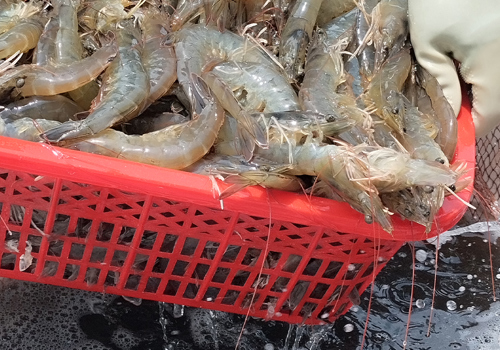
Grow-out Stage
Focusing on healthy growth through nutrition and care
Does your management reflect your stocking densities?
How to select the best grow-out feed?
How to check shrimp feed consumption?
FREQUENTLY ASKED QUESTIONS
Key questions in the grow-out stage
Shrimp are harvested based on market size demand or when pond carrying capacity is reached, prompting partial harvests to allow remaining shrimp to grow larger. This improves price and pond efficiency. Feed should match stocking density, shrimp age, and size. Using cost-effective feed is crucial for maintaining profitability, especially when market prices are low.
Check the carrying capacity of your pond together with your sales advisorWater quality parameters should be managed to stay within the desired ranges for shrimp. It is important that the water is sufficiently aerated and that the faeces of the shrimp is filtered out of the water. Probiotics can be used to help with managing the TAN load in the water, as well as help with disease management. Please ensure use of probiotics as per guidelines of the product. Also adding probiotics into shrimp feed can help to improve digestibility and nutrient absorption.
Check out our probioticsIn hyper-intensive shrimp farming, you’re not just feeding shrimp but also the biofloc—beneficial microbes that improve water quality and provide live feed. Properly supporting this system is essential for stability and shrimp health. Maintain a balanced environment with good aeration, controlled feeding, and carbon inputs to keep the biofloc active and effective. This ensures better growth, water quality, and overall farm efficiency.
Contact our technical advisor for specific on-farm support